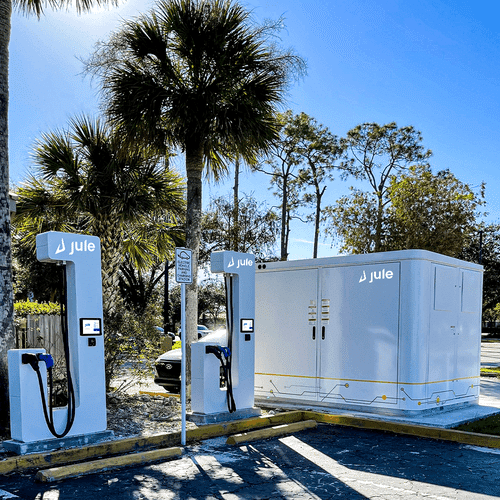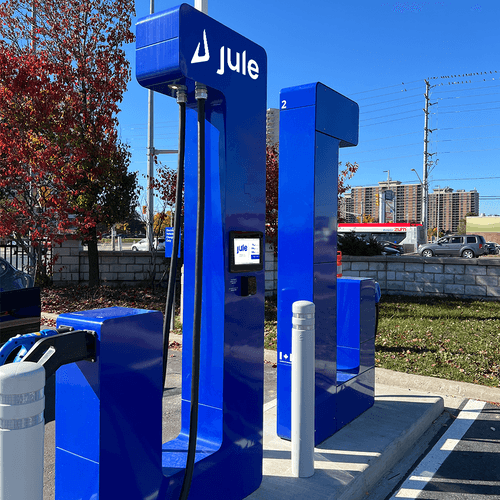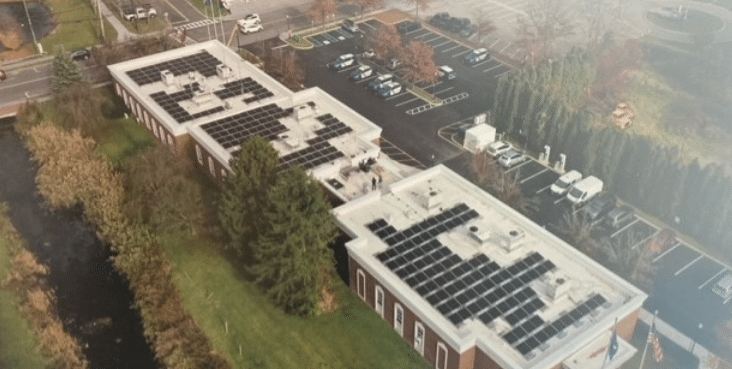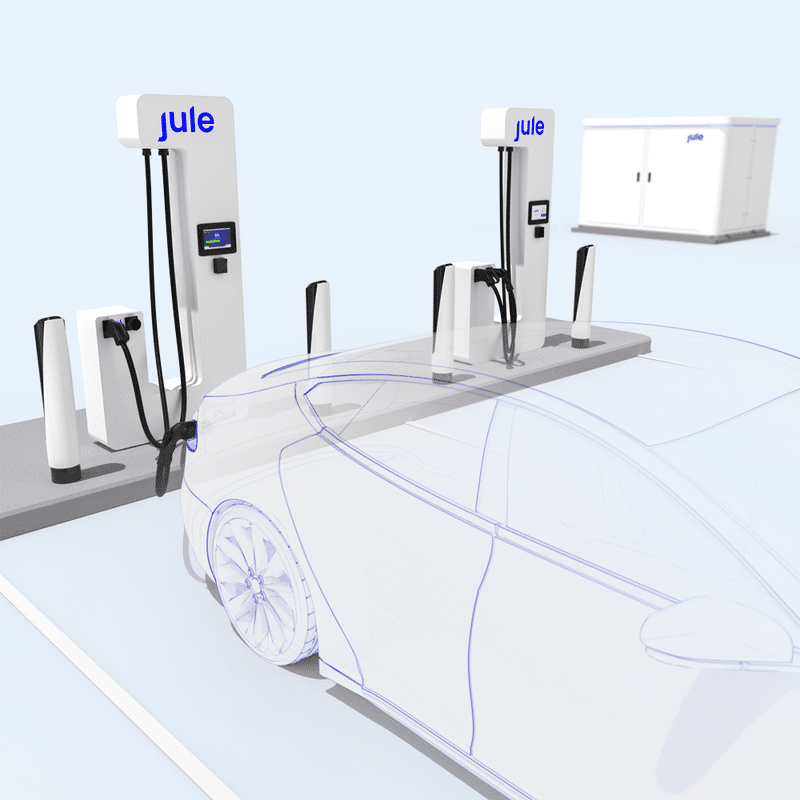Innovative Battery-Buffered EV Charging Solutions Overcome Multiple Challenges
According to the US Energy Information Administration (EIA), the market share of electric and hybrid vehicles in the U.S. rebounded in the second quarter (Q2) of 2024, following a slight decline in the first quarter (Q1). According to estimates from Wards Intelligence, combined sales of hybrid vehicles, plug-in hybrid electric vehicles (PHEVs), and battery electric vehicles (BEVs) rose from 17.8% of total new light-duty vehicle (LDV) sales in Q1 to 18.7% in Q2.
This increase was primarily driven by a significant rise in hybrid electric vehicle (HEV) sales, which grew by 30.7% year over year. HEVs represented 8.6% of the LDV market in Q1 and increased to 9.6% in Q2. Plug-in hybrids also saw a slight uptick, with their share rising from 1.7% to 2.0% year over year.
Battery electric vehicle (BEV) sales remained steady, accounting for 7.1% of the U.S. LDV market in Q2, a similar level to that seen in the second quarter of 2023. Despite slower growth for BEVs earlier in the year, their consistent share signals stable consumer interest in fully electric options, though hybrids drove most of the overall growth in electrified vehicle sales.

Challenges for Direct Current Fast Charger (DCFC) Infrastructure
The growing adoption of electric vehicles (EVs) has placed increased pressure on the infrastructure needed to support widespread EV use, especially Direct Current Fast Chargers (DCFCs), which are crucial for long-distance travel and urban accessibility. Federal funding and public-private partnerships have been essential in accelerating the deployment of DCFCs across North America, but several challenges continue to slow progress:
Utility Interconnection Delays: The process of connecting new charging stations to the power grid often involves complex, lengthy negotiations with utility companies. These delays arise from the need to upgrade local grid infrastructure, secure permits, and ensure compliance with utility standards, which can significantly extend project timelines.
Grid Capacity Limitations: High-power DCFCs demand substantial amounts of electricity, and the current grid in many regions is not equipped to handle such spikes in energy consumption. Upgrading the grid to meet these demands requires large investments in infrastructure, from transformers to transmission lines, which are time-consuming and costly.
Demand Charges: A significant challenge for the financial sustainability of charge point operators (CPOs) is the cost of demand charges—fees based on the highest power usage over a short period. DCFCs, which draw a large amount of power in a short time to charge vehicles quickly, often incur substantial demand charges. This can make operating charging stations, particularly in less busy areas, financially unviable, as the revenue from charging may not offset these high utility costs.
Public-private partnerships and policy interventions, such as demand charge relief, grid modernization, and streamlined interconnection processes, are critical in overcoming these hurdles. Additionally, innovative solutions like battery storage at charging sites and time-based pricing models may help alleviate grid stress and reduce operational costs for charging infrastructure providers.

Battery-Buffered EV Charging Systems Overcome Challenges
Battery-buffered EV charging systems are emerging as a key solution to address the challenges of expanding EV infrastructure, especially regarding grid capacity and interconnection delays. These systems, utilizing Battery Energy Storage Systems (BESS), can store energy during off-peak times and release it during periods of high demand, thus reducing the strain on the grid.
The U.S. Department of Transportation (USDOT) and the National Renewable Energy Laboratory (NREL) have highlighted the importance of BESS in the EV charging landscape. By lowering grid service capacity requirements by 50-80%, BESS can help avoid costly grid upgrades and enhance the resiliency of charging networks during power outages. This technology can store energy when demand is low and deliver it when chargers are in use, smoothing out power consumption spikes associated with high-power Direct Current Fast Charging (DCFC).
Jule, a leading innovator in battery-buffered EV charging, provides solutions that simplify the deployment of EV chargers and significantly reduce both capital and operational expenses. By integrating BESS into charging stations, Jule’s systems lower demand charges and make it possible to install high-power chargers in areas where grid upgrades would be prohibitively expensive. Their approach offers a scalable and resilient charging infrastructure, crucial to meeting the growing demand for EV charging as the U.S. transitions to a more electrified transportation system. Incorporating BESS into EV charging infrastructure is seen as a critical step in improving the financial and operational viability of widespread fast-charging networks.
Jule Solar EV Fast Charging Station Unveiled in Mt. Kisco, New York
Jule’s solutions align with businesses’ sustainability objectives by integrating with renewable energy sources. A standout example is the Mt. Kisco Pilot Project in New York, where Jule’s BESS was combined with a rooftop solar array. This integration reduced the site’s grid reliance and significantly cut carbon emissions, demonstrating Jule’s ability to help businesses achieve aggressive green energy targets.

Jule EVHub: A Comprehensive Solution
Jule’s EVHub is an advanced charging solution that integrates Battery Energy Storage Systems (BESS) with Direct Current Fast Charging (DCFC) technology to address critical challenges in EV infrastructure. This flagship product is designed not just as a standalone charger but as an end-to-end system that simplifies the deployment of fast-charging networks.
Reduction in Grid Upgrade Costs: By incorporating BESS, the EVHub reduces the need for expensive grid upgrades, as stored energy can be used during peak charging times. This helps manage high-power demands without overloading the grid, making it easier and more cost-effective to install chargers in areas with limited grid capacity.
Scalability: The EVHub can serve as a foundation for new charging networks or be integrated into existing infrastructure, allowing for easy expansion as EV adoption grows. Its modular design ensures that additional chargers can be added without significant new investments in grid infrastructure.
Resiliency and Sustainability: The system enhances resiliency by providing backup power during grid outages and contributing to overall grid stability. This is particularly important for fast-charging stations in remote or high-traffic areas where uninterrupted service is crucial.
Operational Efficiency: By smoothing out power demand and reducing reliance on peak-time grid electricity, Jule’s EVHub minimizes operational costs, particularly the high demand charges often incurred by DC fast chargers.
With these capabilities, Jule’s EVHub offers a sustainable and scalable solution that meets the highest standards of the EV charging industry. It addresses the key concerns of deployment costs, scalability, and grid stress, positioning itself as a transformative tool for accelerating the rollout of fast-charging infrastructure across North America.

Jule’s Solutions Overcome Industry Challenges
Jule’s EVHub and innovative solutions offer a more streamlined, cost-effective, and scalable approach to EV charging infrastructure, facilitating smoother adoption of EVs.
High Grid Upgrade Costs
One of the biggest obstacles in deploying traditional high-speed Level 3 EV chargers is the significant cost of upgrading electrical infrastructure, which can vary widely across service territories. These upgrades can deter developers due to their expense and long lead times.
Jule’s solution: The Jule EVHub eliminates the need for costly grid upgrades by utilizing a DC microgrid topology. This allows the Battery Energy Storage System (BESS) to steadily draw energy from the grid during off-peak hours and store it for later use. When charging demand spikes, the stored energy is released in powerful bursts, reducing strain on the grid. This setup enables high-speed Level 3 charging without incurring demand charges, lowering infrastructure costs for businesses.
Demand Charges
Demand charges, calculated based on peak power usage, can significantly increase the operating costs of EV charging stations, particularly for Level 3 chargers that require large power draws.
Jule’s solution: Jule’s BESS allows charge point operators to store energy when it’s less expensive and discharge it during peak demand periods, helping stabilize operating expenses. By efficiently managing power use, Jule’s system enables operators to optimize energy usage and navigate utility tariffs, maximizing station revenue and minimizing costly peak charges.
Lengthy Installation Timelines
Installing traditional EV chargers is often delayed by the complexity of grid upgrades and the lengthy permitting process, which can extend installation times to 6-18 months, delaying project launches.
Jule’s solution: Jule’s modular, plug-and-play systems drastically reduce installation timelines to just 20 weeks. Since significant grid upgrades aren’t needed, the installation process is simplified, allowing businesses to respond quickly to the growing demand for EV charging without extended wait times.
Scalability Challenges
As demand for EV charging grows, traditional infrastructure often requires expensive upgrades to scale. This can hinder businesses from expanding their EV charging capacity efficiently.
Jule’s solution: Jule’s system is designed for seamless scalability. Businesses can start small, with just a couple of DCFC ports, and easily expand their setup as demand increases, without the need for additional grid upgrades. The BESS can support power electronics upgrades, allowing for higher charging speeds or additional capacity without replacing the entire charging system.
Service and Support
A lack of reliable support can lead to increased downtime, negatively affecting user experience and business operations.
Jule’s solution: Jule provides 24/7 in-house support, ensuring 97% uptime. Non-hardware and software issues are addressed immediately, while complex problems are handled by on-call engineers. Escalated cases are managed by technical leads and senior management, ensuring continuous and reliable service for both charge point operators and EV drivers.

Power on Demand
Jule’s Battery Energy Storage System (BESS) is a game-changer in energy management for EV charging infrastructure. It goes beyond simple energy storage by offering three crucial benefits:
Energy Storage: BESS stores energy during off-peak times for later use, reducing the strain on the grid.
Peak Shaving: By releasing stored energy during peak demand periods, the system helps reduce utility demand charges.
Reliable Power: During grid outages or interruptions, Jule’s system ensures continuous operations, enhancing the reliability of the entire charging infrastructure and reducing operational costs.
Safety and Flexibility
Jule’s charging systems offer advanced safety features, including a proactive fire suppression system that meets UL9540A standards. These features make it possible to install high-power chargers in diverse locations. For instance, a major grocery retailer in Canada selected Jule to install chargers in an underground parking garage. This decision allowed the retailer to maximize limited outdoor space while adhering to strict safety regulations, showcasing Jule’s flexibility and commitment to safety.
Leading the Charge with Government Partnerships
Jule’s strong partnerships with government agencies further enhance its success. The company is actively involved in programs like the U.S. National Electric Vehicle Infrastructure (NEVI) Program and Canada’s Zero-Emission Vehicle Infrastructure Program (ZEVIP). Through the NEVI program, Jule has secured over 20 awards, underscoring its expertise in advancing EV infrastructure across North America.
A Future-Ready Solution
With strong partnerships involving site hosts, utilities, charge point operators, and government agencies, Jule is paving the way for an accessible, reliable, and sustainable EV charging future. Contact Jule today for more information.

Electric Vehicle Marketing Consultant, Writer and Editor. Publisher EVinfo.net.
Services